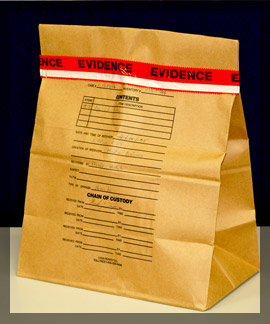Archival Notice
This is an archive page that is no longer being updated. It may contain outdated information and links may no longer function as originally intended.
Home | Glossary | Resources | Help | Contact Us | Course Map
Prosecutors should be familiar with the protocols and policies of both law enforcement and crime labs regarding DNA evidence packaging and storage, as these may impact on issues of evidence admissibility, weight, and chain of custody, and are areas ripe for attack by the defense. Prosecutors should be involved in the training of law enforcement and crime lab personnel, as properly packaged, labeled, and transported evidence will be given more weight in the courtroom and be less open to defense challenges. For example, wet samples (e.g. blood or semen) must be air-dried prior to packaging and each sample individually packaged and labeled to prevent cross-contamination. Should any questions arise regarding these protocols, forensic crime laboratory personnel should be consulted for guidance.
Additional Online Courses
- What Every First Responding Officer Should Know About DNA Evidence
- Collecting DNA Evidence at Property Crime Scenes
- DNA – A Prosecutor’s Practice Notebook
- Crime Scene and DNA Basics
- Laboratory Safety Programs
- DNA Amplification
- Population Genetics and Statistics
- Non-STR DNA Markers: SNPs, Y-STRs, LCN and mtDNA
- Firearms Examiner Training
- Forensic DNA Education for Law Enforcement Decisionmakers
- What Every Investigator and Evidence Technician Should Know About DNA Evidence
- Principles of Forensic DNA for Officers of the Court
- Law 101: Legal Guide for the Forensic Expert
- Laboratory Orientation and Testing of Body Fluids and Tissues
- DNA Extraction and Quantitation
- STR Data Analysis and Interpretation
- Communication Skills, Report Writing, and Courtroom Testimony
- Español for Law Enforcement
- Amplified DNA Product Separation for Forensic Analysts



